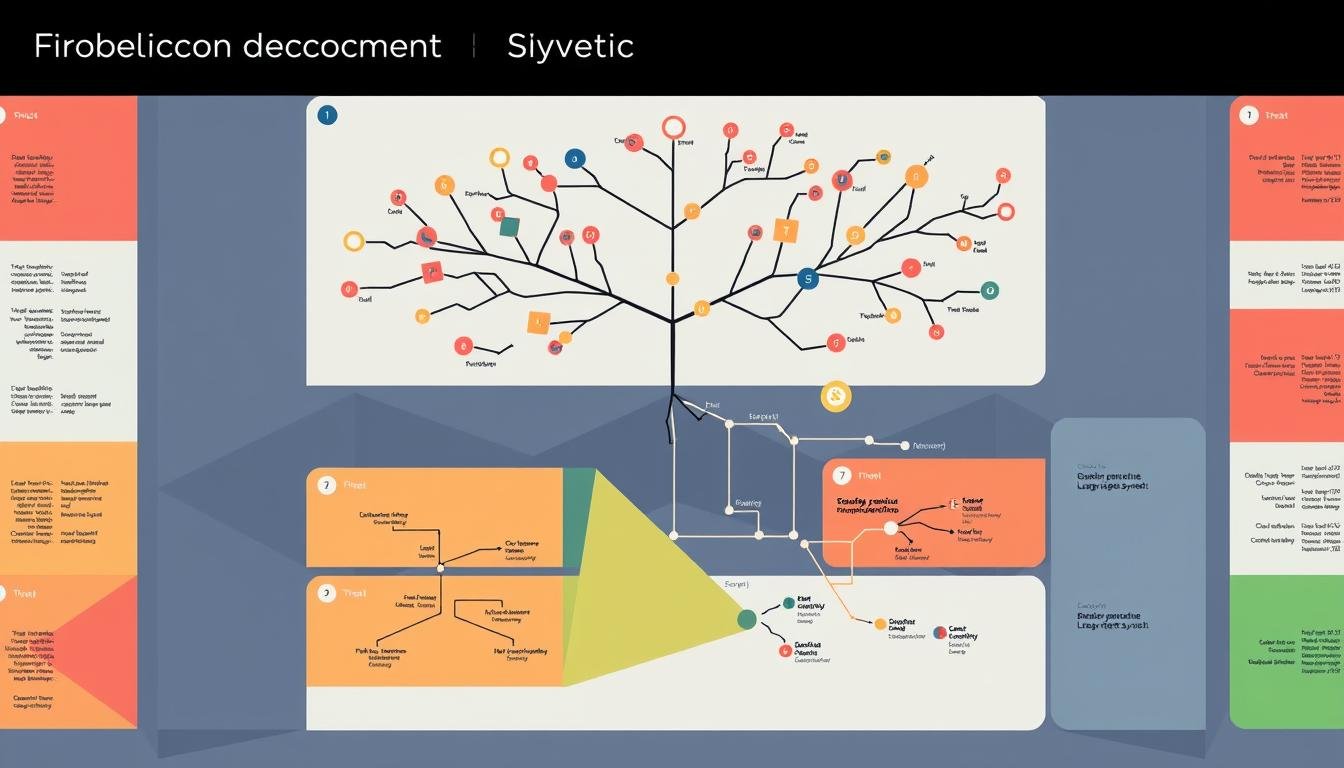Did you know that up to 80% of the structures in languages are supported by the X-bar theory be explained? This theory has greatly changed our understanding of language. It is important whether you are studying linguistics or simply interested in language.
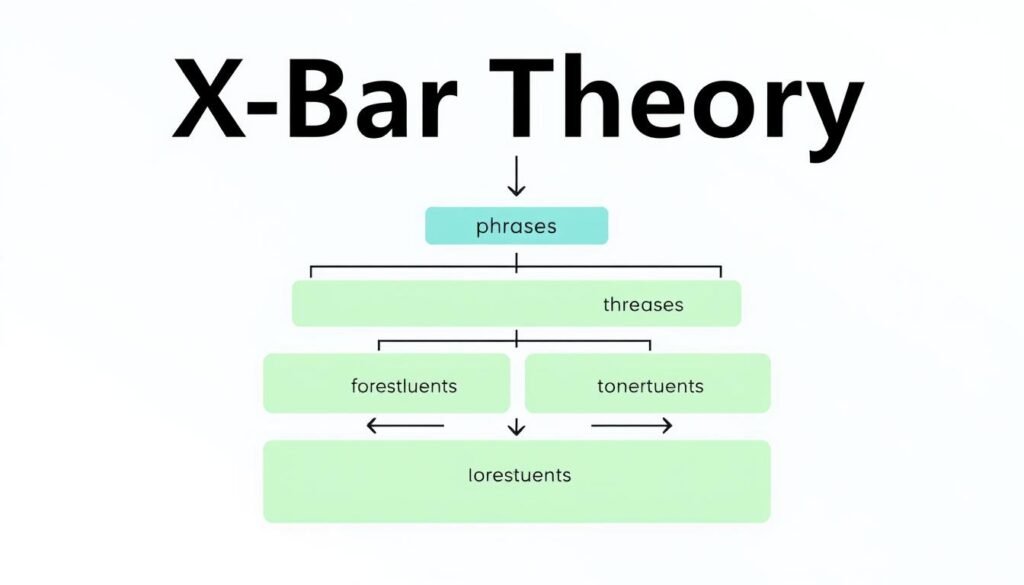
In this article we will learn the X-bar theory know. We will see how it came about and why it is so important today. We will also see how it relates to Chomsky's generative syntax. This theory is fascinating and brings us into the world of linguistic research.
Important findings
- The X-bar theory is a central concept in modern linguistics and explains up to 80% of syntactic structures in natural languages.
- The theory provides a unified model for analyzing sentence structures and is closely linked to Chomsky's generative grammar.
- Core concepts such as Category projection, trait inheritance and syntactic representation are essential for understanding the X-Bar-theory is of crucial importance.
- The X-Bar-analysis enables a systematic investigation of the constituent structure and the creation of meaningful Syntax trees.
- The theory has developed further in recent decades and offers innovative approaches for modern language research.
Understanding the basics of X-bar theory
The X-bar theory is a central concept in the Phrase structure grammar. It helps us to syntactic structure of languages. Noam Chomsky and his team members developed it. It has strongly influenced how linguists analyze language.
Definition and historical development
The X-Bar-theory says that all phrases are structured similarly. It defines a standard structure for phrases. The "head element" is surrounded by modifiers and complements.
This theory emerged from Chomsky's work on the Transformation grammar. It has been further developed and improved over time.
Meaning in modern linguistics
X-bar theory has had a strong influence on modern linguistics. It provides a framework for describing and analyzing language structures. It helps linguists to recognize universal principles in syntax.
This furthers our understanding of the human ability to speak.
Core concepts of the theory
- Header element: The central element of a phrase around which other elements are organized.
- Projection levels: The hierarchical structure in which phrases are created by projecting heads.
- Category features: Properties such as noun, verb or adjective that classify phrases.
- Feature inheritance: The process by which properties of the head element are passed on to the entire phrase.
These core concepts are the foundation of X-bar theory. They enable linguists to syntactic structure of languages.
Structural components of the phrase structure grammar
In linguistics, the Phrase structure grammar very important. It examines how sentences and phrases are structured. Especially the X-bar theory focused on Constituent structure, Category projection and XMax projection.
The Constituent structure looks at how words and phrases are arranged in sentences. It explains how complex structures are created from small units. This concept is very important for X-bar theory and generative grammar.
With the Category projection is about the development of lexical categories into phrases. These processes follow certain rules that are explained in the X-bar theory.
The XMax projection is also central. It refers to the highest level of a syntactic structure. This concept helps us to understand the structure of sentences and phrases.
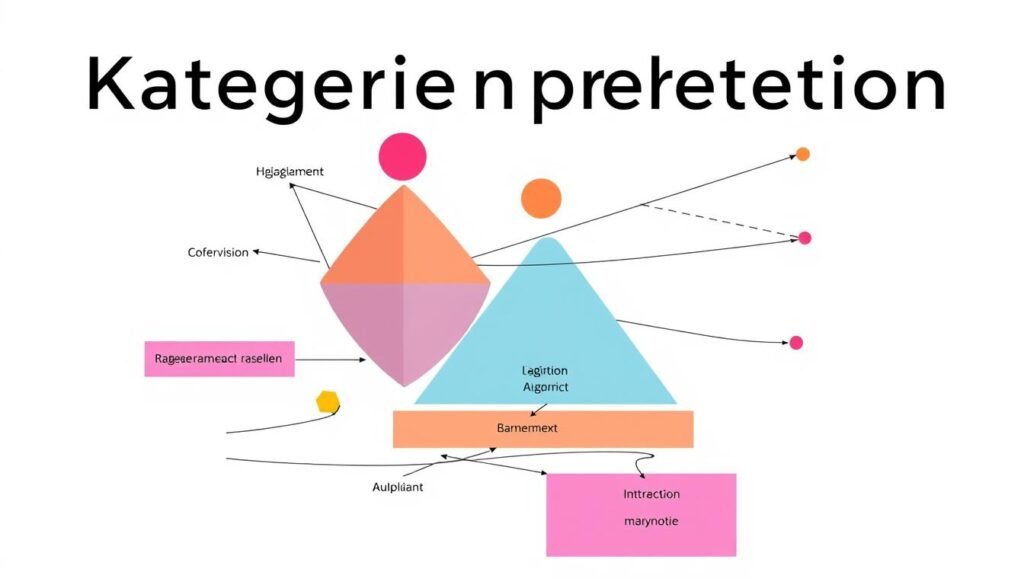
These elements are the heart of the X-Bar theory. They are essential in order to generative syntax understand better.
X-Bar and Chomsky's generative syntax
The X-bar theory originates from the work of Noam Chomsky. His research on the generative syntax have strongly influenced this theory.
Chomsky's influence on theory
Chomsky's Transformation grammar is the basis of the X-Bar theory. He saw that language is structured by rules and principles. This allows you to form an infinite number of sentences.
This idea was very important for understanding the language.
Connection to transformation grammar
The X-Bar theory uses Chomsky's Transformation grammar. It describes the structure of sentences and phrases more precisely. This makes it easier to understand the relationships between words.
Principles and parameters
- An important part of the theory is the Principles and parameters by Chomsky. These concepts help to explain language features.
- Principles are general rules. Parameters explain why languages differ. This model has greatly improved our understanding of language.
Noam Chomsky's work on the generative syntax has strongly influenced the X-bar theory. It has found an important place in linguistics.
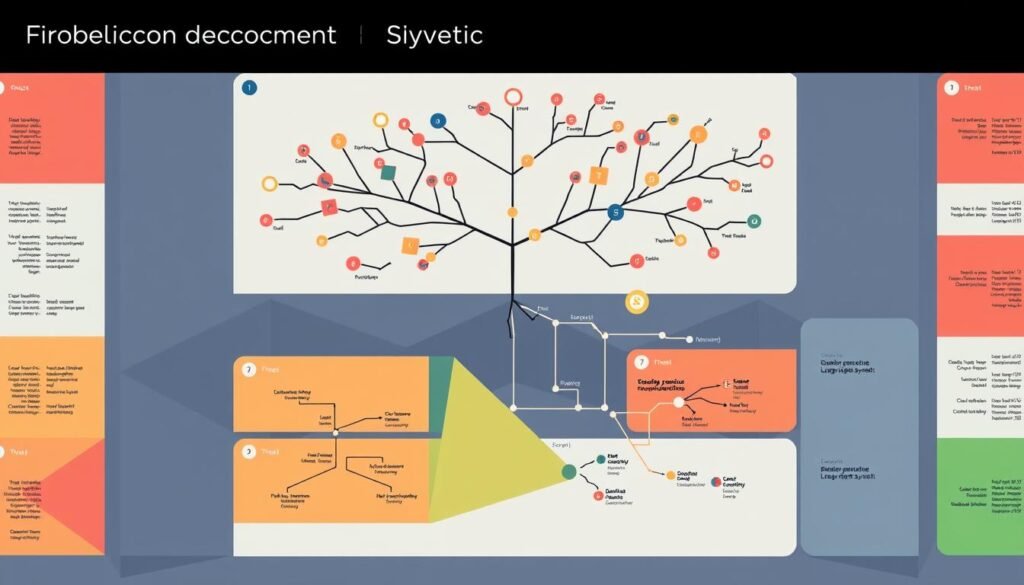
"The X-Bar theory is a direct development of Chomsky's Transformation grammar and offers a powerful tool for analyzing the complex syntactic structures of language."
Syntactic representation in the X-bar theory
The X-bar theory is very important for the syntactic representation. It helps us to better understand language structures. With Syntax trees and Phrase structure rules we can represent the relationships between the elements of a phrase or sentence.
The theory says that every phrase has a similar structure. It consists of a head, complements and specifiers. This is how we can represent the structure of sentences and phrases.
- The head of a phrase is the center that determines the characteristics.
- Complements complete the head and specify it further.
- Specifiers additionally characterize the phrase.
We can see these structures with syntax trees. The nodes stand for the elements, the edges for the connections. This allows us to analyze the structure of an utterance.
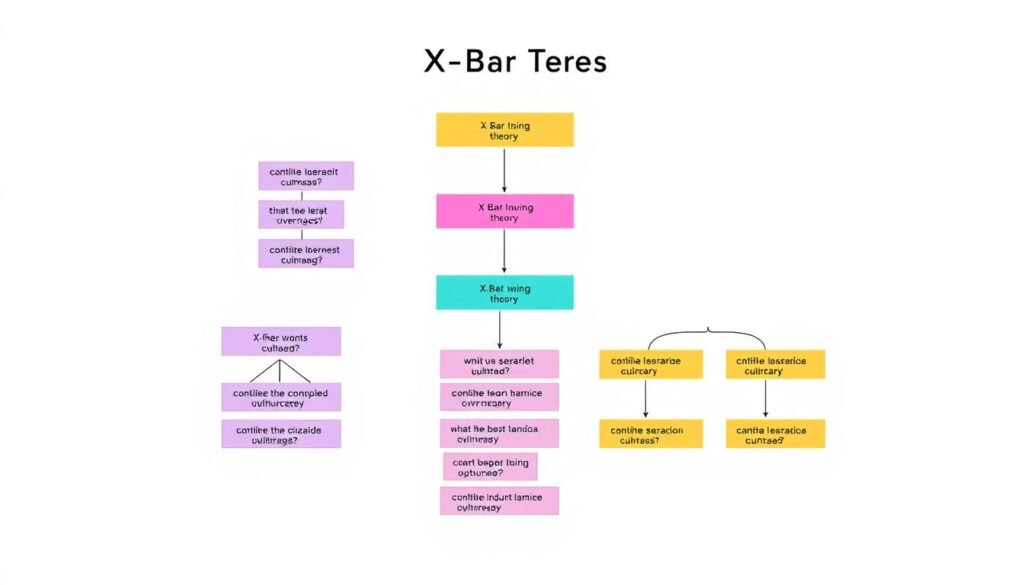
The syntactic representation in X-bar theory is very useful. It helps us to understand the structure of languages. This allows us to better understand the parts of sentences and phrases.
Feature inheritance and category projection
In the X-bar theory Trait inheritance and Category projection very important. They explain how sentences are constructed and what relationships exist between the parts.
Types of projection
There are different types of category projections. These depend on the syntactic categories. For example, nominal phrases (NP), verbal phrases (VP) and adjective phrases (AP) can be formed.
Each projection has a specific pattern. This pattern determines how the parts are arranged and connected.
Structural hierarchies
The Trait inheritance helps us to understand the hierarchies in sentences. It transfers the characteristics of a head element to the superordinate phrase. This creates a clear structure.

Projection types and feature inheritance are important for analyzing complex sentences. They help us to understand the structures and relationships in sentences.
Practical application of the X-Bar analysis
The X-bar theory is a powerful method for the syntactic analysis of languages. It is often used in linguistics and language analysis. It can be used to analyze the Constituent theory and the Internal view of sentences and phrases.
Linguists use X-bar analysis to understand the structure of sentences and word groups. They recognize heads, projections and complements. In this way, they precisely record the relationships between the elements of a phrase.
- Breakdown of sentences into constituents: The X-bar analysis breaks down sentences into their basic constituents.
- Investigation of dependency relationships: Linguists analyze the dependency relationships between the elements of a phrase.
- Creating syntax trees: X-Bar analysis helps, Syntax trees that show the structure of sentences and phrases.
The X-bar theory is also used in the generative syntaxlanguage acquisition research and computational linguistics. It helps to understand human language ability. It is also important for the development of models for machine language processing.
"X-bar theory is a powerful tool for analyzing and understanding the complex structures of languages."
Constituent structure and syntax trees
The Constituent structure and the development of Syntax trees are central to the X-bar theory. They help us to visualize and analyze the structure of sentences and phrases.
Structure of syntax trees
Syntax trees show how words and phrases are connected. They form a hierarchical structure. The structure follows the rules of X-bar theory.
- The top level is the main category (X-Bar).
- These include the specifiers and complements.
- Each constituent can be divided into sub-nodes.
Analysis methods
There are various Analysis methods for syntax trees. They help us to examine the structure and understand relationships.
- Top-down analysis: from top to bottom.
- Bottom-up analysis: from the bottom up.
- Combined methods: Benefits of both approaches.
The analysis of the Constituent structure and syntax trees are key. They help us to understand the structure of a language.
Current developments and modern approaches
The X-bar theory has developed considerably in recent years. One important concept is the minimalist program. It was developed by Noam Chomsky and his colleagues. The aim is to make the rules of language simple and elegant.
Constraint-based theories are also gaining in importance. These approaches see language as a system of constraints. They emphasize the dynamic interactions between different factors.
The categorical grammar also brings new ideas to the X-bar theory. It sees language as a system of functions and arguments. Word types play a major role in the Structure formation.
| Approach | Core concepts | Relevance for the X-bar theory |
|---|---|---|
| Minimalist program | Elegance, simplicity, reduction to basic principles | Simplification of theoretical assumptions, focus on the essentials |
| Constraint-based theories | Dynamic interaction of restrictions, flexible Structure formation | Supplementing the rigid rules with softer mechanisms |
| Categorical grammar | Function-argument structures, role of parts of speech | More precise analysis of syntactic relationships, better recording of linguistic diversity |
These modern approaches show that X-bar theory is a dynamic and influential field of research. They offer new perspectives for a better understanding of human language.
"X-bar theory remains a central pillar of modern linguistics, even if it is constantly evolving and absorbing new impulses."
Conclusion
The X-bar theory is a central concept in the Linguistics and Syntax theory. It helps us to understand sentences and phrases in languages. The theory is based on phrase structure, Category projection and trait inheritance.
X-bar theory has evolved over the last few decades. It is still an important part of syntax research. Linguists use it to analyze the structure of sentences.
Future work on the X-bar theory will continue to improve it. It will be better adapted to new findings. In this way, theory will continue to be a key tool for linguists.
"X-bar theory is a decisive step towards understanding the syntax of natural languages and a milestone in the history of generative grammar.”
| Concept | Meaning | Application |
|---|---|---|
| Phrase structure | Hierarchical structure of sentences and phrases | Structure of syntax trees, analysis of constituent structure |
| Category projection | Derivation of higher projection levels from lexical categories | Modeling the syntactic representation |
| Trait inheritance | Transfer of grammatical features in the phrase structure | Explanation of syntactic dependencies |
Glossary of important terms
There are important concepts in the X-bar theory of linguistics. These include the Core phrasewhich Core grammarwhich Endocentricity and the c-command.
The Core phrase is the most important part of a phrase. It gives the phrase its meaning. It is the heart of the phrase.
The Core grammar is the core of the language rules. It consists of the basic rules. In contrast, peripheral structures are less important.
The principle of Endocentricity says that every phrase has a head. This head determines the characteristics of the phrase. It is a projection of the core.
The c-command describes the relationships between elements in a sentence structure. It shows how elements can influence others.
| Term | Definition of |
|---|---|
| Core phrase | The main component of a syntactic structure that carries the semantic meaning. |
| Core grammar | The core of the grammar of a language, consisting of the basic and productive rules. |
| Endocentricity | The principle that each phrase contains a header that determines the properties of the entire phrase. |
| c-command | A syntactic concept that defines the hierarchical relationships between constituents. |
These terms are important for the X-bar theory and the generative syntax. They help us to analyze and understand sentences.
Further resources and literature
If you want to learn more about X-Bar theory, we have some great resources for you. Noam Chomsky has written Chomsky hierarchy and the Projection principle contributed a great deal to theory. His work is very important for modern linguistics.
Attachment theory also offers valuable insights. It helps us to better understand the structure of phrases. Studies on X-bar analysis show how to apply these structures in practice.
If you want to know more about X-bar theory and its development, these resources are a good place to start. They provide a solid basis for familiarizing yourself with the world of modern linguistics.
FAQ
What is the X-bar theory?
X-bar theory is an important part of linguistics. It explains how languages are structured. It helps to understand sentence structures.
What is the significance of X-bar theory in linguistics?
It is very important for analyzing sentences. It shows how phrases and sentences are structured. This is a central aspect of linguistic research.
How does category projection work in X-bar theory?
Category projection shows how words become complex structures. Certain rules are followed to form these structures.
What role does Noam Chomsky play in the X-Bar theory?
Noam Chomsky has strongly influenced the theory. His ideas on syntax and Transformation grammar are closely linked to the X-bar theory.
How are syntactic structures represented in the X-bar theory?
It uses syntax trees and rules to represent structures. This helps to analyze the structure of sentences and phrases.
How does trait inheritance work in the X-bar theory?
Feature inheritance shows how properties of words are transferred to structures. This is important for the analysis.
How can the X-Bar analysis be used in practice?
You can use them to analyze sentences. To do this, you create syntax trees and use concepts such as Constituent structure.
What are the latest developments in relation to the X-bar theory?
There are new approaches such as the Minimalist Program. These expand our understanding of language structures.
